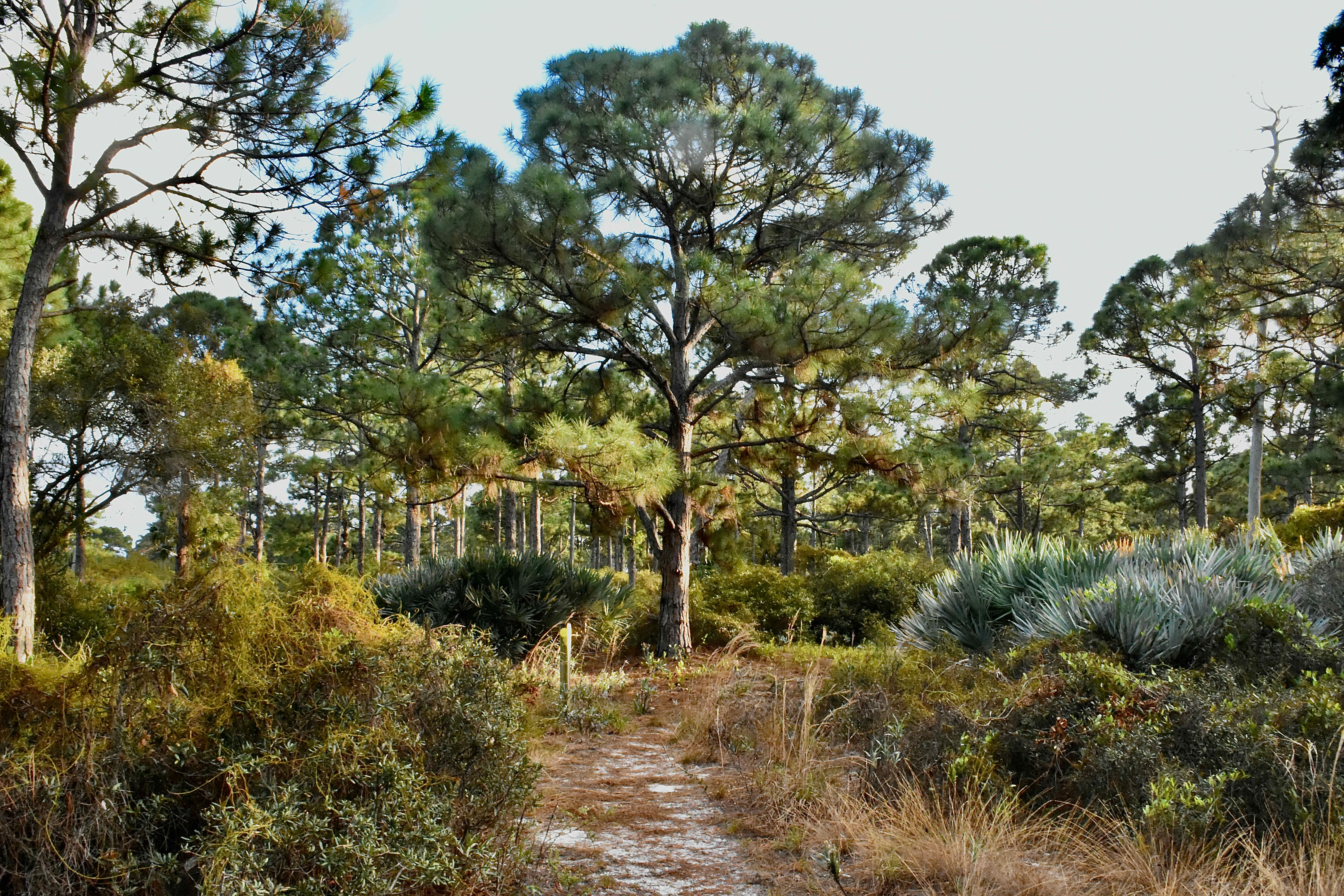Hike the Eastern Pondhawk Trail and you'll eventually encounter Hypoluxo's scrubby flatwoods. Continue along the trail and you'll pass by the restored wetlands. The trail jaunts sharply westward for maybe 50 yards and then south again, and you'll find yourself surrounded by tangles of slash pines, saw palmetto, scrub oaks, staggerbush, earleaf greenbriar, love vine with lots and lots of gopher apple covering the ground.
It's beautiful land, no doubt, but those those slash pines should be sand pines, because sand pines are the dominant tree in undisturbed scrubby flatwoods. Look at nearby Lantana Scrub Natural Area, Rosemary Scrub Natural Area and High Ridge Natural Area and you see sand pines, but not Hypoluxo Scrub Natural Area. Why not? Probably because the sand pines that were once here were cut down at some point. When the land reforested 40 years ago or so, slash pines took over. Sand pines need the heat of a fire for their cones to open and release their seeds; slash pines don't. Cutting down the sand pines interupted their natural cycle. How do we know that sand pines once dominated this forest? If you look closely, you'll still find a few in the area north of here where scrub transitions into flatwoods.
By the way, the trail is easy walking, because Palm Beach County's land managers have cut a nice, clean trail. But imagine yourself as one of Florida's early residents trying to make your way through here as you hunt or forage or simply go from point A to point B. It's beautiful land, but also tough land. From here, the trail loops toward the south end of the property, then back through more flatwoods, through scrub and back to the start — the end of the trail. Back to the Beginning.
RETURN TO THE MAIN PAGE
It's beautiful land, no doubt, but those those slash pines should be sand pines, because sand pines are the dominant tree in undisturbed scrubby flatwoods. Look at nearby Lantana Scrub Natural Area, Rosemary Scrub Natural Area and High Ridge Natural Area and you see sand pines, but not Hypoluxo Scrub Natural Area. Why not? Probably because the sand pines that were once here were cut down at some point. When the land reforested 40 years ago or so, slash pines took over. Sand pines need the heat of a fire for their cones to open and release their seeds; slash pines don't. Cutting down the sand pines interupted their natural cycle. How do we know that sand pines once dominated this forest? If you look closely, you'll still find a few in the area north of here where scrub transitions into flatwoods.
By the way, the trail is easy walking, because Palm Beach County's land managers have cut a nice, clean trail. But imagine yourself as one of Florida's early residents trying to make your way through here as you hunt or forage or simply go from point A to point B. It's beautiful land, but also tough land. From here, the trail loops toward the south end of the property, then back through more flatwoods, through scrub and back to the start — the end of the trail. Back to the Beginning.
RETURN TO THE MAIN PAGE

